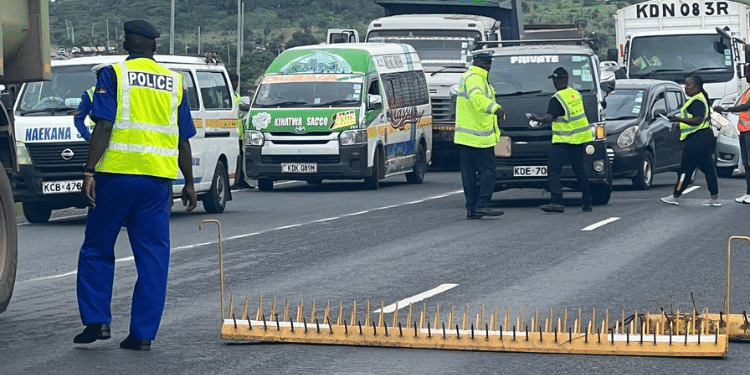We're loading the full news article for you. This includes the article content, images, author information, and related articles.
A tragic accident in Keroka town has claimed five lives, highlighting the escalating death toll on Kenyan roads and placing renewed scrutiny on the boda boda sector's safety standards.

A horrific road crash in Keroka town, Kisii County, claimed the lives of at least five people and left several others with critical injuries on the evening of Monday, 27 October 2025. The incident occurred when a lorry transporting molasses lost control and ploughed into a group of boda boda operators at the busy Ichuni junction along the Keroka-Masimba road.
According to Kisii County Traffic Enforcement Officer Richard Kipkemoi, the driver of the lorry veered off the road before ramming into the motorcycle riders who were waiting for passengers. The crash, which happened around 7:00 PM EAT, caused a major traffic snarl-up as emergency services and local residents rushed to the scene to rescue survivors trapped in the wreckage. The injured were transported to Keroka Sub-County Hospital for urgent medical care, while the deceased were moved to a local morgue for identification.
This latest incident is part of a disturbing trend of rising road fatalities across Kenya. Reports indicate that at least 17 people have died in various road accidents nationwide in the 72 hours preceding the Keroka crash. Just a day prior, six members of one family perished when their matatu plunged into the Kiama River in Gatanga, Murang'a County.
Data from the National Transport and Safety Authority (NTSA) paints a grim picture of the situation. As of 28 September 2025, a total of 3,586 people had lost their lives on Kenyan roads during the year, a slight increase from the 3,495 fatalities recorded during the same period in 2024. Pedestrians account for the highest number of fatalities, but motorcyclists and their passengers represent the fastest-growing category of victims. Between January and September 2025, 922 motorcyclists and 305 pillion passengers died, marking a significant increase from the previous year.
The Keroka tragedy has once again cast a harsh spotlight on the boda boda sector, a vital part of Kenya's informal economy that is plagued by persistent safety challenges. Research has identified several key contributors to the high rate of motorcycle accidents, including inadequate training and licensing, overloading, lack of helmet use, and reckless driving. A study by the National Crime Research Centre cited causing death by dangerous riding as the most prevalent crime committed by boda boda operators.
In response to the alarming statistics, the government has launched the National Road Safety Action Plan (2024–2028), which aims to formalize the boda boda sector and enforce stricter compliance with traffic laws. However, road safety advocates argue that weak enforcement of existing regulations remains a significant hurdle. Issues such as poor road infrastructure and the use of substandard safety gear also contribute significantly to the rising death toll.
As authorities in Kisii investigate the specific cause of the molasses tanker crash, the incident serves as a tragic reminder of the urgent and multifaceted interventions required to curb the carnage on Kenya's roads. The NTSA and the National Police Service have urged all road users to exercise caution, adhere to traffic regulations, and take personal responsibility for their safety and the safety of others to prevent further loss of life.
Keep the conversation in one place—threads here stay linked to the story and in the forums.
Other hot threads
E-sports and Gaming Community in Kenya
Active 6 months ago
Popular Recreational Activities Across Counties
Active 6 months ago
The Role of Technology in Modern Agriculture (AgriTech)
Active 6 months ago
Investing in Youth Sports Development Programs
Active 6 months ago